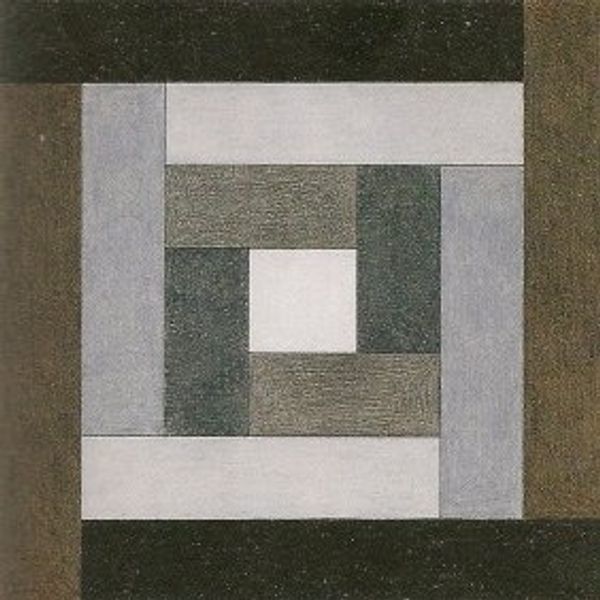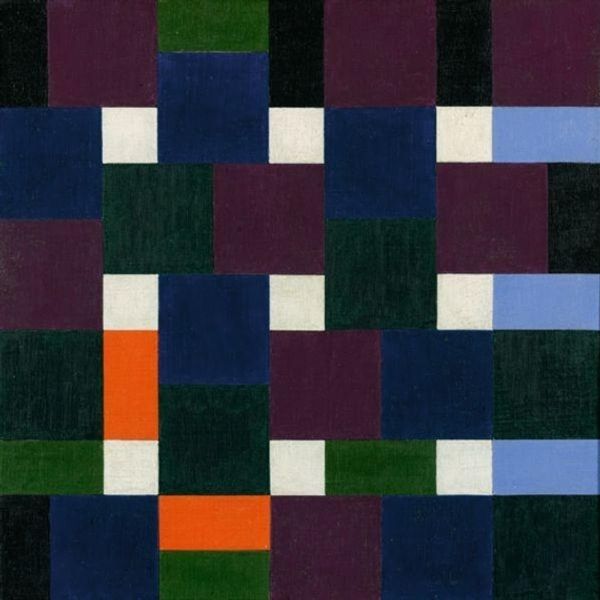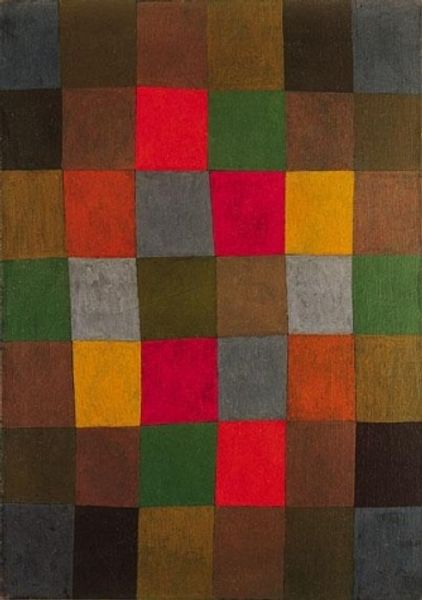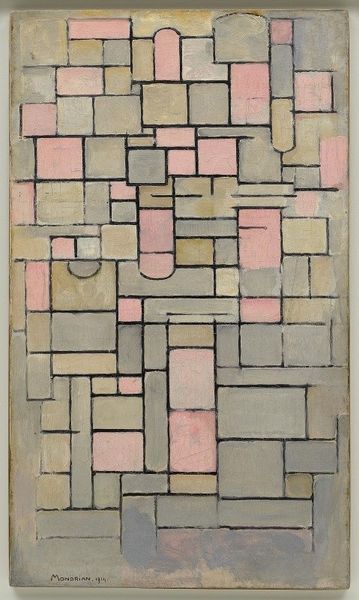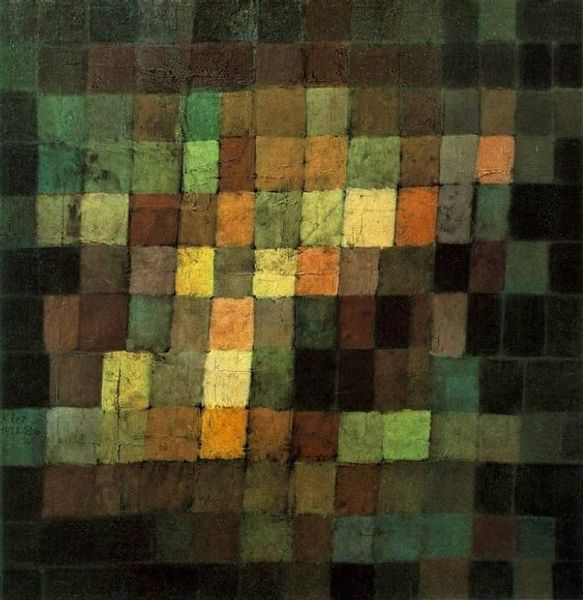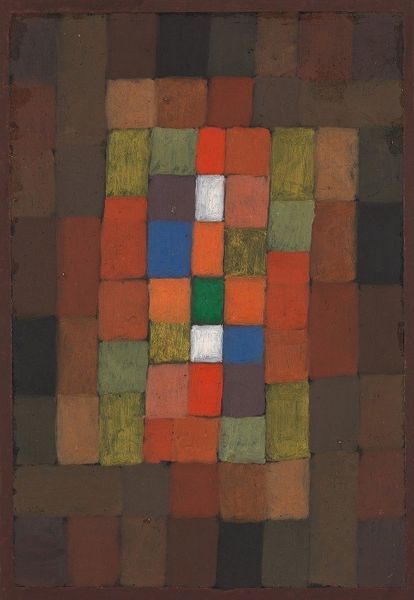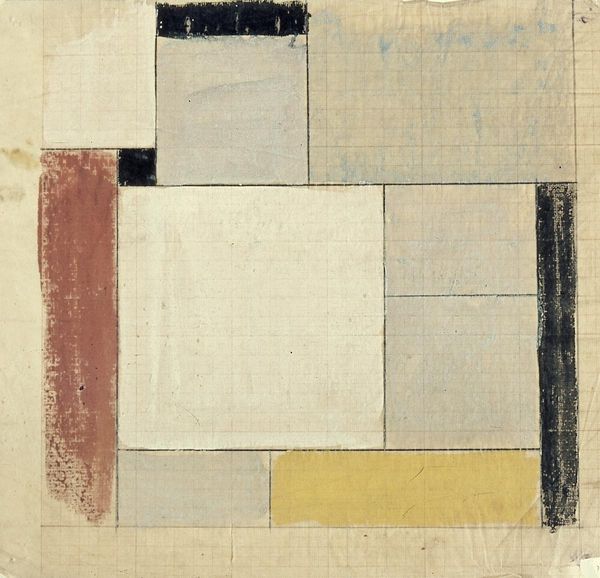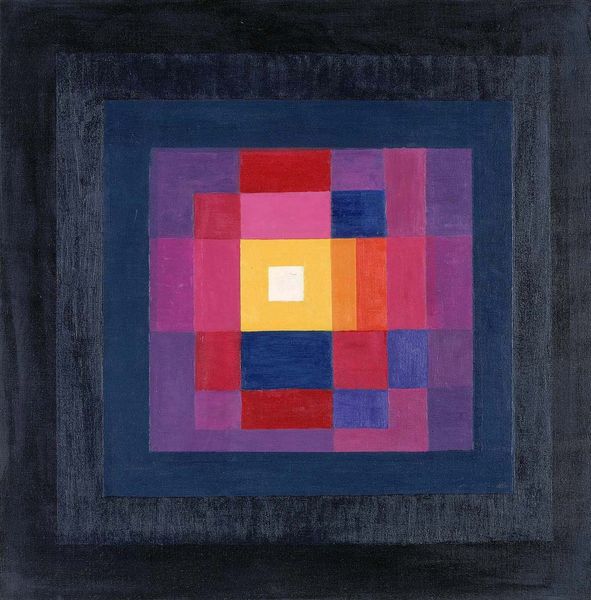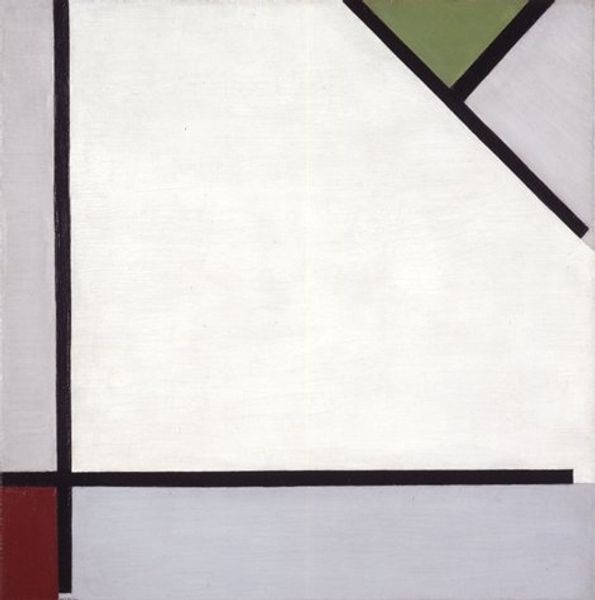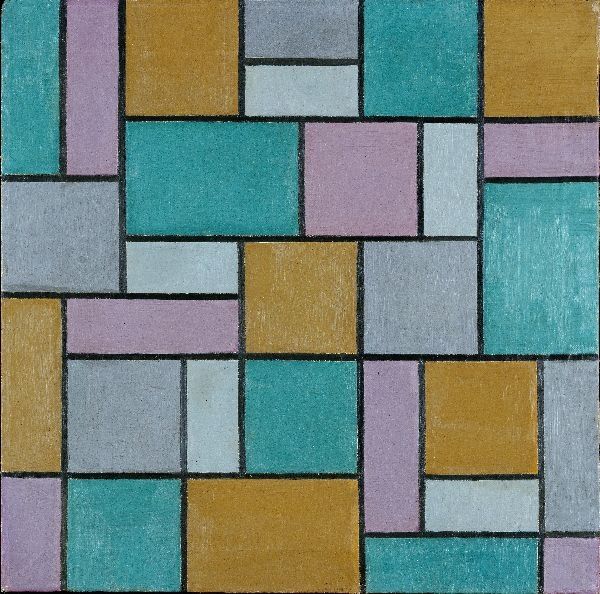
Dimensions: 23 x 23 cm
Copyright: Victor Vasarely,Fair Use
Curator: Here we have Victor Vasarely’s "Etudes Bauhaus D" created in 1929, an oil painting embodying the core tenets of the Bauhaus movement. Editor: It’s strangely hypnotic. Those earthy, almost autumnal colors draw me into the center. It feels like gazing into a well. Curator: The careful construction is quite deliberate. Vasarely meticulously arranges these rectangles, using variations in tone to suggest depth and movement. For me, this reflects the Bauhaus emphasis on craft, the act of building, making... Editor: And rebuilding, constantly questioning form and function. Look at the framing, that interplay of dark green and maroon rectangles setting off the central, radiating geometric pattern. This creates a distinct hierarchy, but does it reinforce existing structures or challenge them? Curator: Good point. Bauhaus aimed to break down those rigid boundaries between fine art and craft, embracing industrial techniques. But the hand of the artist, the individual applying paint to canvas, is still present here. Consider the tension this creates, thinking of materiality, that even in pure geometry, that human element perseveres... Editor: The layering is especially powerful. These aren't just colors, but almost represent different tiers of influence, whether those are economic, societal, or political pressures of that era. The inner "core", for instance, bathed in golden yellows and a bright grid. Is that hope? Idealism? Curator: Or is it the light from the core powering all the structural elements that keep everything turning. If you closely, that light touches, is fundamental to the shades and tones in other sections. How did Vasarely create this, technically? Pigments layered upon pigments... What processes of production have been applied to its creation? Editor: Which links directly back to the Bauhaus mission – merging art and industry. He understood how even something seemingly abstract can be embedded with meaning, reflecting society’s dynamics, gendered assumptions, race and its ideologies. Curator: It is all connected! This micro, formal structure embodies, well the construction, or construction sites across Germany, and what they represented socially. How art doesn’t exist in a vacuum. Editor: Precisely! That understanding feels even more important now. It makes us think deeper and maybe that's its ultimate purpose, even today.
Comments
No comments
Be the first to comment and join the conversation on the ultimate creative platform.
